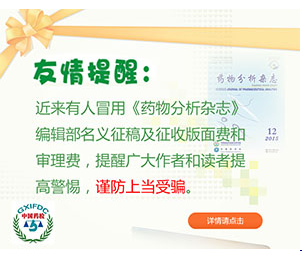[1] FAO and WHO. Food safety risk analysis. A guide for national food safety authorities[J]. FAO Food Nutr Pap,2006,87:ix-xii,1-102
[2] Food and Agriculture Organization of the United Nations. The Procedural Manual of the Codex Alimentarius Commission, 12 th Ed. 2002:43[EB/OL].[2016-05-05]. http://www.fao.org/docrep/005/y2200e/y2200e00.htm#Contents
[3] 马双成,金红宇,刘丽娜,等.中药中外源性有害物质残留风险控制初探[J].中国药学杂志,2015, 50(2):99 MA SC, JIN HY, LIU LN, et al. Risk control of exogenous harmful residues in traditional Chinese medicines[J]. Chin Pharm J,2015, 50(2):99
[4] 中国药典2010年版.一部[S]. 2010:334, 316 ChP 2010. Vol Ⅰ[S]. 2010:334, 316
[5] BRIDI R, CROSSETTI FP, STEFFEN VM, et al. Phytother Res, The antioxidant activity of standardized extract of Ginkgo biloba(EGb 761)in rats[J]. 2001,15(5):449
[6] DU G, WILLET K, MOUITHYS-MICKALAD A, et al. EGb 761 protects liver mitochondria against injury induced by in vitro anoxia/reoxygenation[J]. Free Radic Biol Med, 1999, 27(5/6):596
[7] 王志玲,勾凌燕,刘景东,等.槐角不同部位中主要黄酮苷元成分的比较[J].时珍国医国药, 2012,23(3):594 WANG ZL, GOU LY, LIU JD, et al. Comparative study on three flavonoid aglycone equivalents in the pericarps and the seeds of Sophora japonica L.[J]. Lishizhen Med Mater Med Res, 2012,23(3):594
[8] 刘丽娜,何轶,李耀磊,等.银杏叶提取物及其制剂补充检验方法的建立[J].药物分析杂志, 2016,36(5):856 LIU LN, HE Y, LI YL, et al. Study on the supplemental testing methods for Ginkgo biloba extract and its preparations[J]. Chin J Pharm Anal,2016, 36(5):856
[9] 刘叔倩,郑俊华,王弘.不同气候区银杏叶中黄酮和萜内酯含量的变化[J].中草药, 2000, 31(6):424 LIU SQ, ZHENG JH, WANG H. Variation of flavonoids and terpenlactones in Ginkgo(Ginkgo biloba)leaves from regions with different climatic conditions[J]. Chin Tradit Herb Drugs, 2000, 31(6):424
[10] ZHAO YY, WANG JH, FU XT, et al. Simultaneous determination of eleven flavonoid glycosides in Ginkgo biloba leaves collected in different seasons by UPLC PDA method[J]. Acta Pharm Sin,2013, 48(1):98
[11] 钱大玮,鞠建明,朱玲英.不同树龄银杏叶在不同季节中总黄酮和总内酯的含量变化[J].中草药,2012, 33(11):1025 QIAN DW, JU JM, ZHU LY. Study on changing rules for total flavonoids and total terpene lactones in Ginkgo biloba leaves at different ages of trees and collecting seasons[J]. Chin Tradit Herb Drugs,2012, 33(11):1025
[12] CALDWELL DJ,MASTROCCO F, NOWAK E,et al. An assessment of potential exposure and risk from estrogens in drinking water[J]. Environ Health Perspect, 2010,118(3):338
[13] LACHENMEIER DW, LIMA MC, NÓBREGA, IC, et al. Cancer risk assessment of ethyl carbamate in alcoholic beverages from Brazil with special consideration to the spirits cachaca and tiquira[J]. BMC Cancer,2010, 10:266
[14] SINGER AC, HOWARD BM, JOHNSON AC,et al. Meeting report:risk assessment of tamiflu use under pandemic conditions[J]. Environ Health Perspect, 2008,116(11):1563
[15] JUHASZ AL, SMITH E, WEBER J, et al. In vivo assessment of arsenic bioavailability in rice and its significance for human healthrisk assessment[J]. Environ Health Perspect, 2006, 114(12):1826
[16] 陶宏,风险分析在食品安全国家标准制定中的应用研究[D].北京:清华大学, 2012 TAO H. Study on Risk Analysis Application in National Food Safety Standard Development[D]. Beijing:Tsinghua University,2012
[17] 慕静.食品安全监管模式创新与食品供应链安全风险控制的研究[J].食品工业科技, 2012,33(10):49 MU J. Research of supervising model innovation of food safety and safety venture control of food supply chain[J]. Sci Technol Food Ind, 2012, 33(10):49
[18] 李淑华.从美国的食品安全监管看我国的食品安全风险控制[J].华北科技学院学报,2012, 9(4):60 LI SH. On risk control of China's food safety from the perspective of US food safety administration[J]. J North China Inst Sci Technol, 2012, 9(4):60




